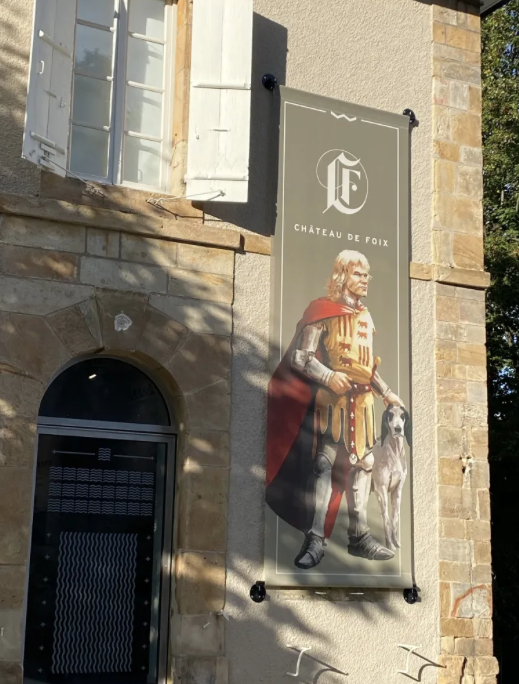What does it mean to speak of the irrevocable impossibility of ‘rectification,’ in the sense in which a devotee of the cyclic theory of History—such as, in India, the first ranks of orthodox Hindus; such as, in the West, a Rene Guénon or Julius Evola—would understand this idea?
It means—and there it is almost a ‘self-evident truth’—the continuation of the course of events and currents of thought, and the evolution of the human and non-human world, as we have known it for as long as there has been a history, that is to say, for as long as we have been able, with the help of relics and documents, to construct for ourselves an idea, as non-arbitrary as possible, of the past.
We can hardly go back more than a few millennia if we want to confine ourselves to history proper, i.e. to a more or less explainable human past. We can only look back a few tens of thousands of years, starting with mysteriously preserved art objects whose meaning and use we ignore, but whose obvious perfection we nevertheless admire.
 A few years ago I saw, in the small museum of the chateau of Foix, a flint statuette of such a model, and such an expression, that none of the masterpieces of Tanagra surpasses it in beauty. The anonymous sculptor who left this marvel lived, the guide tells me, ‘some thirty thousand years ago’. What did he want to do, no doubt spending several years of his life giving a soul to this insignificant fragment of the hardest stone there is? Did he want to represent a deity—to create a concrete form that helped him and others to concentrate the mind, the first step towards the ‘realisation’ of the Unthinkable? Did he want to immortalise a beloved face? To attract scattered forces to a point—and which ones?—for a definite aim. And which one?
A few years ago I saw, in the small museum of the chateau of Foix, a flint statuette of such a model, and such an expression, that none of the masterpieces of Tanagra surpasses it in beauty. The anonymous sculptor who left this marvel lived, the guide tells me, ‘some thirty thousand years ago’. What did he want to do, no doubt spending several years of his life giving a soul to this insignificant fragment of the hardest stone there is? Did he want to represent a deity—to create a concrete form that helped him and others to concentrate the mind, the first step towards the ‘realisation’ of the Unthinkable? Did he want to immortalise a beloved face? To attract scattered forces to a point—and which ones?—for a definite aim. And which one?
Only those who live ‘in the eternal’ and who can, through a created object, enter into effective contact with its creator, who is always present for them, could say. I cannot. But I do know the deep impression that this statuette left on me: the impression of a forbidden world, separated from ours by some impenetrable veil, and of a quality far superior to ours; of a world where the ‘average man’, the simple craftsman, was so much closer to the hidden Reality than the greatest of our relatively recent artists (not to mention, of course, all the producers of ‘modern art’!).
Thirty thousand years! In perpetuity without beginning or end, that was yesterday. Some archaeologists, whose assessments I cannot, in my ignorance, judge the accuracy or error of, attribute ten times this age to the enigmatic carved and sculpted blocks of Tiahuanaco. Assuming that they are right, or that they are only wrong by a few millennia, it was only yesterday. It is difficult, beyond a certain distance, to distinguish differences in the past. This already applies to the very short period of a human’s life.
Unlikely as it may seem, my earliest clear memories are of the time when I was between one and a half and two years old. I can see the flat my parents lived in at that time, with its furniture. I can easily relive the impression made by certain knick-knacks, and several episodes connected with the child’s car in which my mother used to take me for a ride. But these memories, which go back to, let’s say, 1907, seem to me hardly older than the first film, Quo Vadis?, that I saw, in April 1912, since it was preceded by Newsreels, one of which, the most important and the only one that I remember, was none other than the famous sinking of the Titanic. If I were to live for several centuries, I would undoubtedly put the memories of my tenth and my fiftieth year ‘on the same level’ (in the way that ‘pre-dynastic’ Egypt and that of Pharaoh Tjeser, the great king of the 3rd Dynasty, seem to me, in the fog of time, to be almost contemporary).
Thus all that I can say of the more or less remote milestones that scientists, specialists in prehistory, discover along the path of creative men—we don’t even know which—is that they evoke the whole of a past in which all that counts for me, and in particular the beauty, strangely surpasses the present that I see around me.